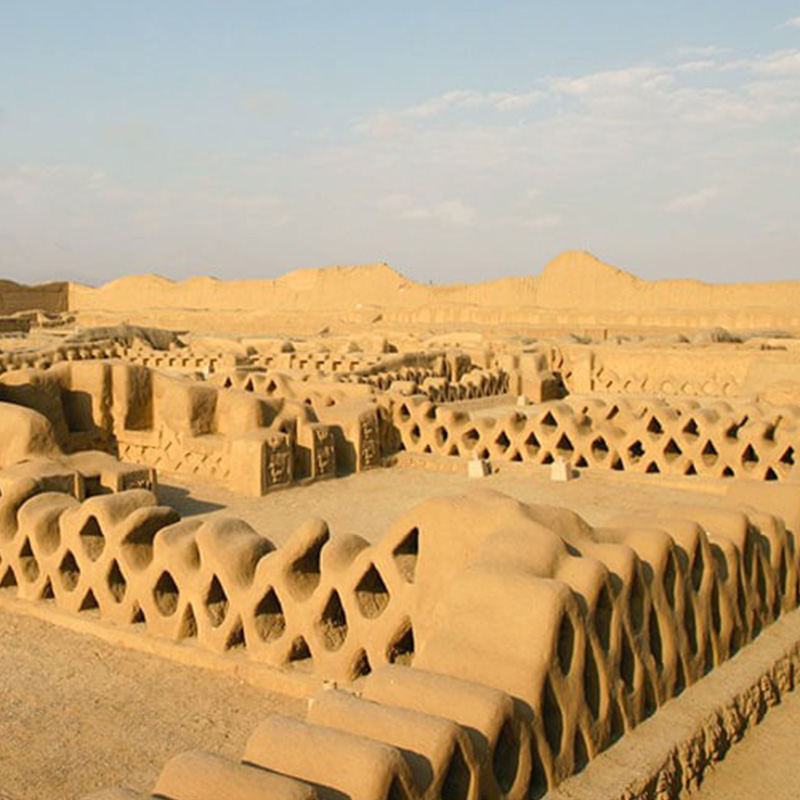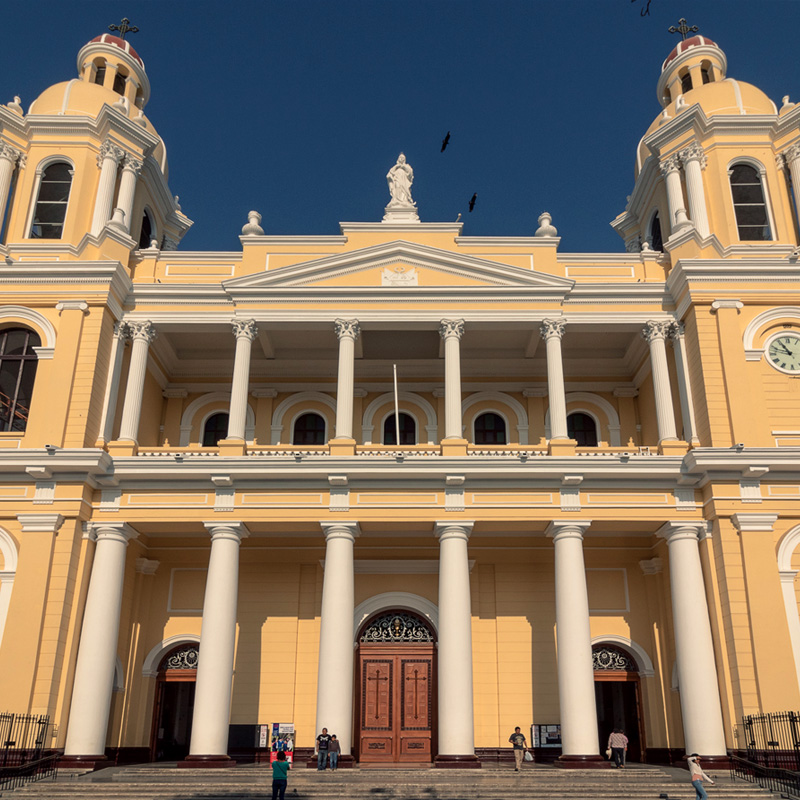Chiclayo
SHARE
Rising to the headlines as one of the liveliest metropolises of the northern Peruvian coast, Chiclayo, which currently has nearly 600,000 inhabitants, shows no sign of wanting to slow down its fervent activity.
La Ciudad de la Amistad, or the "City of Friendship", is a very welcoming place for visitors, where, in addition to the warm welcome typical of the most picturesque cities of South America, you will also find a very wide gastronomic offer. varied. Known throughout the state for its brujos (sorcerers), Chiclayo also offers a fascinating market of healing herbs, elixirs and other shamanic curiosities.
For all these reasons, although it is relatively devoid of real tourist attractions, the center still manages to win over visitors, who outside it can instead devote themselves to the discovery of dozens of archaeological sites dating back to the Moche and Chimu civilizations.
In this area the Spanish missionaries founded a small rural community in the mid-16th century, which is why it is customary to attribute the prosperity of the place to help "from above". With a shrewd move the missionaries chose a strategic position, at the junction of the most important trade routes between the coast, the mountainous areas of the hinterland and the jungle itself. The role of Chiclayo as the commercial heart of the district has therefore allowed the city to outperform economically other important localities in the region, such as the nearby Lamayeque, without counting the contribution in cultural and social terms guaranteed by the constant influx of boats coming from bit from all over the world.
 Less than 25 years ago, in 1987, some archeologists identified the location of a royal moche burial in Sipan, 30 kilometers south-east of Chiclayo. This discovery soon proved extraordinary, given that hundreds of splendid priceless artifacts were recovered on the site, prompting scholars to continue the excavations that are not yet finished.
Less than 25 years ago, in 1987, some archeologists identified the location of a royal moche burial in Sipan, 30 kilometers south-east of Chiclayo. This discovery soon proved extraordinary, given that hundreds of splendid priceless artifacts were recovered on the site, prompting scholars to continue the excavations that are not yet finished.
Partly thanks to these rare treasures, the area of Chiclayo has witnessed the inauguration of some extraordinarily designed museums, such as those of Lambayeque, 11 kilometers north of Chiclayo.
In the area, in addition to the many coastal villages, the ruins of Tucume dotted with enigmatic mud pyramids, and another wonderful museum located in Ferrenafe are also worth a visit.
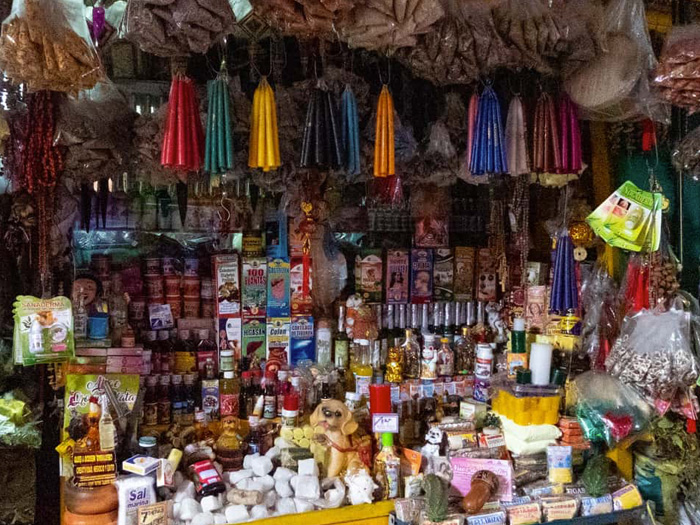 In the city an obligatory stop is the Mercado Modelo, one of the most fascinating markets of the whole Peru, which rises in a very large area where the stalls laden with fresh fruit and vegetables, colorful fabrics, handicrafts of different kinds, live animals, fish and meat look like an intricate maze.
In the city an obligatory stop is the Mercado Modelo, one of the most fascinating markets of the whole Peru, which rises in a very large area where the stalls laden with fresh fruit and vegetables, colorful fabrics, handicrafts of different kinds, live animals, fish and meat look like an intricate maze.
A sub-part of the main market is the mercado de brujos, the "shaman market", located at the south-western end of the area, where you can find practically everything that can be useful for a spell: whale bones, various amulets, skins snake, vials of unidentified tonics, hallucinogenic cacti and whole sheaves of aromatic herbs.
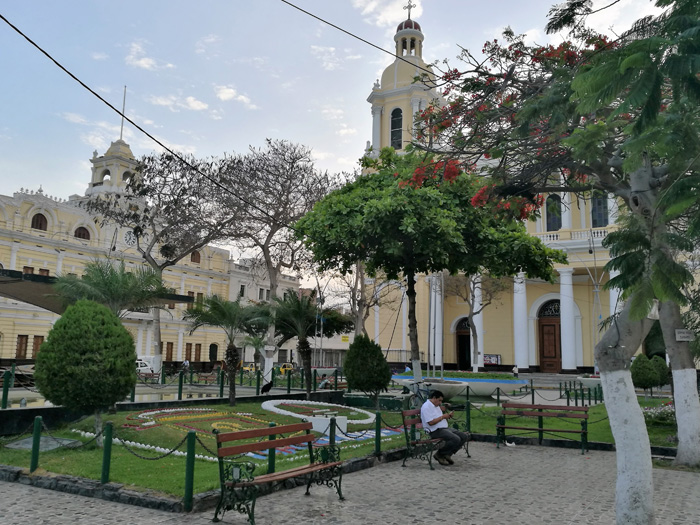 The Cathedral of Chiclayo was built in the late nineteenth century and its Plaza de Armas (Parque Principal) was not inaugurated until 1916, which may give an idea of how recent the city is, at least according to Peruvian standards.
The Cathedral of Chiclayo was built in the late nineteenth century and its Plaza de Armas (Parque Principal) was not inaugurated until 1916, which may give an idea of how recent the city is, at least according to Peruvian standards.
The Paseo de las Musas exhibits statues of classical taste depicting mythological characters, while Plaza de Armas is a large space that is filled every night with strolling couples, evangelical preachers and sadly unemployed shoe shiners.
If you are in the company of small children, you can pay a visit to the playground located at the western end of E. Aguirre, not far from the main square.
The beaches around Chiclayo
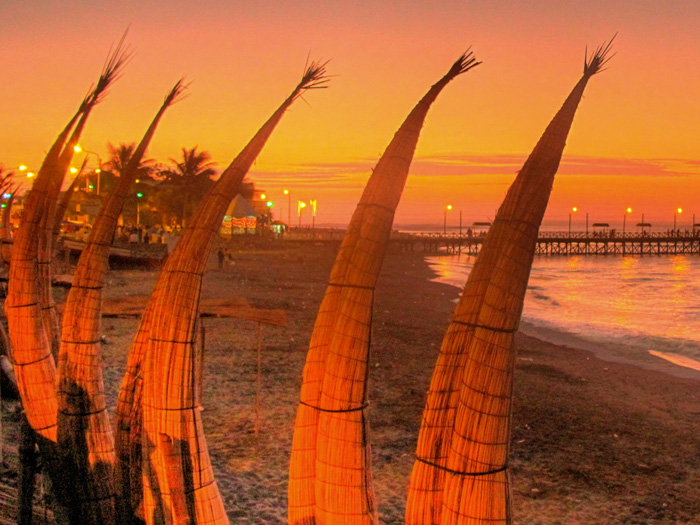 Starting from Chiclayo you can easily visit two locations on the coast: Pimentel and Santa Rosa. The first, 14 kilometers away from the capital, has an extensive sandy beach and a long disused pier that juts out over the water; the town houses some beautiful colonial-era buildings arranged around Plaza Diego Ferre, while at the southern end of the beach it is possible to see the typical construction of caballitos by local fishermen.
Starting from Chiclayo you can easily visit two locations on the coast: Pimentel and Santa Rosa. The first, 14 kilometers away from the capital, has an extensive sandy beach and a long disused pier that juts out over the water; the town houses some beautiful colonial-era buildings arranged around Plaza Diego Ferre, while at the southern end of the beach it is possible to see the typical construction of caballitos by local fishermen.
On summer weekends, and particularly between January and March, Pimentel is generally crowded by the inhabitants of Chiclayo on vacation, not to mention the many surfing enthusiasts who meet there. A few kilometers south of Pimentel is Santa Rosa, a lively fishing village where it is even easier to see the caballitos floating among the colorful boats of the most modern fishing fleet. The town is famous for its chicha (fermented corn beer), of which there are as many as 28 varieties available for tasting, to accompany perhaps with a dish of tortilla de reya, a Spanish omelette based on parsnips absolutely from to taste.
Climate and best time to travel
Thanks to the warm and sunny climate practically throughout the year, there is no season more suitable than the others to stay in Chiclayo and its surroundings. Sun and sea lovers will be able to dedicate themselves all year to their favorite pastimes, with the security of a very low number of rainy days and always high temperatures. In particular the values are on average between 29 and 20 degrees from December to April, between 27 and 18 degrees from May to July and between 23 and 16 degrees during the rest of the year. Precipitation, to tell the truth practically absent, tends to occur mainly between January and April.
Discover Chiclayo
